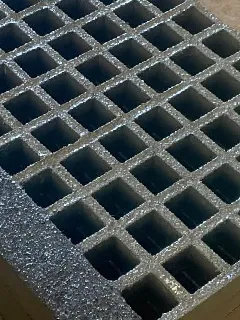loading...
- No. 9, Xingyuan South Street, Dongwaihuan Road, Zaoqiang County, Hengshui, Hebei, China
- admin@zjcomposites.com
- +86 15097380338
- Welcome to visit our website!
Exploring the Advantages and Applications of Aluminium Gratings in Modern Design
The Rise of Aluminium Gratings in Modern Construction
Aluminium gratings are rapidly gaining popularity in various industries, thanks to their lightweight, durable, and corrosion-resistant properties. As construction and manufacturing sectors continue to seek innovative materials that enhance efficiency and safety, aluminium gratings have emerged as a versatile solution for numerous applications. This article explores the advantages of aluminium gratings and their increasing adoption in modern construction.
One of the primary benefits of aluminium gratings is their remarkable strength-to-weight ratio. Compared to traditional steel gratings, aluminium gratings are much lighter, making them easier to transport and install. This lightweight nature reduces labor costs and increases efficiency on job sites, allowing for quicker project completion. Despite being lighter, aluminium gratings do not compromise on strength; they can support heavy loads, making them suitable for heavy traffic areas.
Another significant advantage of aluminium gratings is their resistance to corrosion. Unlike steel, which can rust when exposed to moisture, aluminium naturally forms a protective oxide layer that shields it from corrosion. This property makes aluminium gratings ideal for outdoor applications and in environments where they may come into contact with chemicals, saltwater, or harsh weather conditions. Facilities like wastewater treatment plants, chemical processing units, and coastal structures benefit from the long lifespan of aluminium gratings, reducing maintenance costs and the need for frequent replacements.
aluminium gratings

In addition to durability and corrosion resistance, aluminium gratings offer excellent safety features. The non-slip surface of aluminium gratings ensures that foot traffic remains safe, even in wet conditions. This characteristic is particularly crucial in industries where falls can lead to severe injuries. Moreover, aluminium gratings can be designed with various hole patterns and sizes, allowing for optimal drainage and preventing water accumulation, further enhancing safety on work sites.
The aesthetic appeal of aluminium gratings is yet another reason for their rising popularity. With a modern and sleek finish, these gratings complement contemporary architectural designs. They can be anodized or powder-coated in various colors, providing an opportunity for customization to fit the aesthetic requirements of buildings, walkways, and parks. This versatility makes aluminium gratings an attractive option for architects and designers looking to combine functionality with visual appeal.
Sustainability is becoming increasingly important in the construction industry, and aluminium gratings align well with eco-friendly practices. Aluminium is a highly recyclable material, and the processes involved in manufacturing aluminium gratings are often less harmful to the environment than those for traditional materials. By choosing aluminium gratings, companies can reduce their carbon footprint and contribute to a more sustainable future.
In conclusion, aluminium gratings represent a significant advancement in construction materials. Their lightweight structure, unmatched durability, corrosion resistance, safety features, aesthetic appeal, and sustainability make them an ideal choice for various applications, from pedestrian walkways to industrial platforms. As industries continue to evolve and adapt to changing demands, the rise of aluminium gratings reflects a commitment to innovation and excellence in construction practices. With more companies recognizing the benefits of this remarkable material, we can expect to see an even greater integration of aluminium gratings in the architectural landscape of the future.
-
The Rise of FRP Profiles: Strong, Lightweight, and Built to LastNewsJul.14,2025
-
SMC Panel Tanks: A Modern Water Storage Solution for All EnvironmentsNewsJul.14,2025
-
GRP Grating: A Modern Solution for Safe and Durable Access SystemsNewsJul.14,2025
-
Galvanized Steel Water Tanks: Durable, Reliable, and Ready for UseNewsJul.14,2025
-
FRP Mini Mesh Grating: The Safer, Smarter Flooring SolutionNewsJul.14,2025
-
Exploring FRP Vessels: Durable Solutions for Modern Fluid HandlingNewsJul.14,2025
-
GRP Structures: The Future of Lightweight, High-Performance EngineeringNewsJun.20,2025
